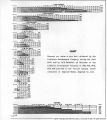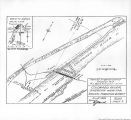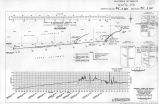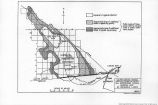| OCR Text |
Show 8 THE ALLrAMEBICAJST CANAL. to some extent by the construction of storage reservoirs, reference should be had to the following publications and compilations: Report on the Utilization of the Waters of Colorado River for Irrigation and its Relation to the Imperial Valley, California, by C. E. Grunsky, consulting engineer in the United States Reclamation Service. Dated June 30, 1907, and addressed to Hon. James Rudolph Garfield, Secretary of the Interior. (S. Doc. No. 103, 65th Cong.. 1st sess.1 Colorado River and its Utilization, by E. C. LaRue (Water Supply Paper No. 395, U. S. Geological Survey.)1 The Lo-wer Colorado and the Salton Basin, by C. E. Grunsky (Transactions American Society of Civil Engineers, Vol. LIX, pp. 1-51. Dec, 1907). Irrigation and River Control in the Colorado River Delta, by H. T. Cory (Transactions American Society of Civil Engineers, Vol. LXXVI, pp. 1204-1453. Dec, 1913). Also the unpublished very comprehensive compilation of material bearing on the Colorado River by John T. Whistler, of the United States Reclamation Sendee, and on file in the Reclamation Service offices at Washington, Denver, and Yuma. THE PRESENT SITUATION ON THE LOWER COLORADO RIVER. This board can not adequately present and discuss the problem of an all-American or high-line canal from the Colorado River into the Imperial Valley without reviewing briefly the present situation on the lower ^Colorado River, which in many respects is unique and exceptionally complex. The factors which are responsible for this condition are to be sought in the physical characteristics of the river and of the delta cone which it has pushed from Yuma southwesterly into Mexico: the unfortunate location of the international boundary line; and the human agencies which have disturbed and modified the river's natural delta channels and delta conditions generally, and have given the river an opportunity to run wild. The principal facts to be considered in any discussion of the problem of the lower Colorado River are presented in the following pages. The Colorado River is essentially a United States river, but it becomes an international boundary at Pilot Knob, about 8 miles below Yuma. Its outfall into the Gulf of California is wholly on Mexican territory. For about 20 miles below Pilot Knob the river is the boundary between the United States and Mexico. Arizona lies to the east and Lower California to the west of this part of the river. The water of the lower Colorado River, or more particularly the water which flows in the river past Yuma, has its source in seven States. A small portion only of the watershed of the Colorado above Yuma, possibly 1,500 square miles out of a a total of 244,000 square miles, is in Mexico, but in a region of light rainfall with almost negligible effect upon the river's flow at Yuma. Practically the entire flow of the river originates, therefore, within » This papeT contains much valuable information relating to Colorado River and its tributaries and gives an estimate of the possible ultimate extent of irrigation from this stream. It contains a good reference to 'blications describing fhe river and earl y explorations thereof. |
| Source |
Original book: [State of Arizona, complainant v. State of California, Palo Verde Irrigation District, Coachella Valley County Water District, Metropolitan Water District of Southern California, City of Los Angeles, California, City of San Diego, California, and County of San Diego, California, defendants, United States of America, State of Nevada, State of New Mexico, State of Utah, interveners] : California exhibits. |




































































































































































































































































































































































































